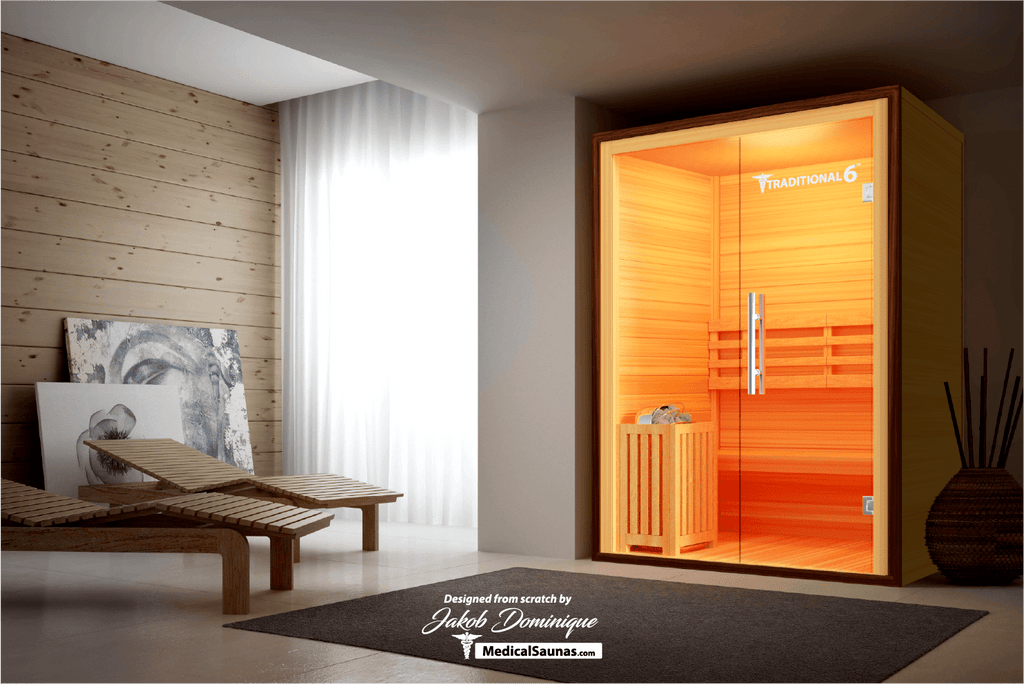Rumored Buzz on Traditional Sauna
Rumored Buzz on Traditional Sauna
Blog Article
Little Known Facts About Traditional Sauna.
Table of ContentsNot known Details About Traditional Sauna What Does Traditional Sauna Do?Our Traditional Sauna IdeasFacts About Traditional Sauna RevealedHow Traditional Sauna can Save You Time, Stress, and Money.
Power financial savings is one point to take into consideration for people who prepare on utilizing their sauna regularly. For a conventional sauna, bathers usually require to wait for 30-40 minutes for the space to preheat prior to entering. Infrared saunas, on the other hand, normally reach their ideal temperature level in about 15 minutes.That indicates that in an infrared sauna, bathers can begin enjoying their sauna right away. One difference between the two types of sauna that is usually overlooked is the social experience.

About Traditional Sauna

Attempt a sauna today and discover several of the amazing advantages for yourself!.

Factors such as warm resistance, preferred level of detoxification, and total health ought to be considered when deciding which kind of sauna to make use of. Infrared saunas are a kind of sauna that utilize infrared light to warm the body straight, instead of heating up the air around the body like standard saunas.
Some Known Details About Traditional Sauna
The temperature in an infrared sauna is normally less than in a standard sauna, with temperature levels varying from 120F to 150F. Infrared saunas offer a series of advantages that make them an appealing option for those aiming to boost their health and wellbeing. Several of the benefits of infrared saunas consist of: Infrared saunas utilize lower temperature levels than typical saunas, which can make them more comfy for those that locate heats hard to tolerate.
Infrared saunas have actually been revealed to aid the body eliminate toxic substances with sweating. Sweating can additionally help to enhance skin wellness by removing contaminations and dead skin cells.
The heat produced by infrared saunas can assist to enhance blood flow and enhance flow. Infrared saunas have actually been revealed to help decrease tension and advertise leisure.
With their lower temperatures, deep infiltration, and series of health and wellness advantages, infrared saunas are a fantastic means to kick back, relax, and boost your general wellness. Standard completely dry saunas have actually been around for centuries and are still preferred today. They are normally this hyperlink warmed with wood, gas, or electricity and have reduced humidity levels.
The Single Strategy To Use For Traditional Sauna
There are a number of advantages to using a traditional dry sauna. Below are a couple of: Leisure: The web link heat and low moisture in typical completely dry saunas can aid kick back the muscle mass and reduce stress levels. Detoxification: Sweating in a sauna can assist eliminate toxins from the body, which can enhance general health.
When it involves saunas, there are 2 primary kinds of home heating techniques: typical and infrared. Standard saunas make use of warmed air to warm up the body, while infrared saunas make use of infrared radiation to permeate the skin and warmth the body from within. One of the primary distinctions between the 2 methods is the sort of warm they create.
Nonetheless, because infrared radiation passes through the skin more deeply, it can create a comparable sweat response at lower temperature levels. Another distinction is the way the heat is distributed. Conventional saunas heat the air, which then heats the body via convection. Infrared saunas, on the other hand, heat the body straight with radiation.
In terms of power effectiveness, infrared saunas are usually more reliable than standard saunas because they require less power to continue reading this operate. They likewise warm up faster, so they can be made use of for shorter sessions. Traditional Sauna. When it pertains to the impacts on the body, both types of saunas have been shown to have advantages
The 5-Minute Rule for Traditional Sauna
Infrared saunas have actually been shown to have similar benefits, as well as possibly aiding with detoxification, skin health and wellness, and immune feature. On the whole, the choice between a standard or infrared sauna comes down to personal preference and private needs. Traditional saunas may be much better for those who favor greater temperatures and a more extreme sweat feedback, while infrared saunas may be much better for those who desire a more mild and efficient heat therapy.
Both kinds of saunas supply unique advantages and drawbacks that must be thought about before choosing. The option between an infrared sauna and a conventional completely dry sauna greatly depends on individual choice and the wanted benefits. Those that prefer a more comfortable, lower temperature level environment may choose an infrared sauna, while those that are trying to find extreme heat and a standard sauna experience may favor a conventional dry sauna.
Below are some safety and security pointers to remember when using infrared and conventional dry saunas:: Saunas can create too much sweating, resulting in dehydration. It is very important to consume lots of water previously, throughout, and after sauna sessions to remain hydrated.: It is advised to restrict sauna sessions to 20-30 minutes to prevent overheating and dehydration.
Report this page